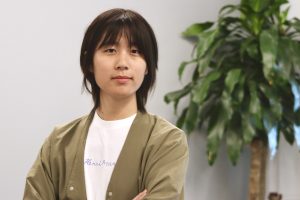
Jincheng Yang joined the Department of Applied Mathematics and Statistics at Johns Hopkins on July 1 as an assistant professor. Previously a Dickson Instructor at the University of Chicago, Yang is known for her work in partial differential equations (PDEs), with a focus on models from fluid dynamics and kinetic theory. Her research tackles longstanding mathematical challenges that are critical to understanding the behavior of complex systems, from ocean waves and tornadoes to plasma physics and beyond.
In this Q&A, Yang shares how her research is evolving, what she hopes to accomplish at Johns Hopkins, and why she believes mathematics can help us understand the natural world.
Tell us a little about yourself.
I grew up near the Yangtze River in China, and my academic career began when I joined the Honors Youth Program at Xi’an Jiaotong University at the age of 15. After earning my undergraduate degree, I received my PhD in mathematics at the University of Texas at Austin. I then spent a year as a member of the Institute of Advanced Study, which further deepened my research interest. Outside of work, I enjoy playing the piano and other instruments, and I’m a fan of both classical and rock music.
Describe your research.
My research focuses on the mathematics governing fluid motion, particularly nonlinear partial differential equations. I study phenomena such as shock waves, turbulence, boundary layers, and stability. Currently, I am investigating questions related to singularity formation and long-time behavior of solutions, using tools from regularity theory and stability analysis.
What are some of the real-world applications of your research?
The equations I study are fundamental to modeling and predicting a wide range of natural phenomena, including weather patterns, ocean currents, tornadoes, tsunamis, and the movement of groundwater. Many extreme weather events and natural disasters can be viewed as manifestations of pathological solution behaviors in these equations—for example, a tornado can be seen as a concentrated vorticity around a rapidly rotating core, while a tsunami is modeled by traveling waves that become nearly discontinuous. Accurately predicting these kinds of events requires close collaboration between meteorologists, geophysicists, and applied mathematicians working on both theoretical and computational aspects of fluid dynamics.
What drew you to this field and focus area?
I first encountered PDEs as an exchange student at Columbia University and was struck by how broadly they can model physical, social, and biological systems. I have studied PDEs at several institutions with inspiring instructors like Ovidiu Savin (Columbia) and Stefania Patrizi (UT Austin), both offering new insights and deepening my understanding.
My research in PDEs furthered during my junior year at Georgia Tech. Since then, I’ve been passionate about fluid-related problems and fortunate to have had amazing mentors who have guided me in the field. The fluid dynamics and kinetic theory communities are both intellectually rich and genuinely supportive, and I am proud to be part of them.
What excites you about bringing this work to Johns Hopkins?
Until now, my research has focused primarily on the theoretical aspects of fluid dynamics. At Johns Hopkins, I’m excited to engage with researchers in mathematical analysis, computational fluid dynamics, and statistical physics. I look forward to interdisciplinary collaboration. In addition to fluid PDEs, also interested in operations research and stochastic optimization, and I’m eager to collaborate with colleagues in these areas.
What are some of your goals for this first year at JHU?
In my first year, I aim to become more familiar with the department’s culture and to build connections both within and across disciplines. One of my goals is to create a rigorous and supportive learning environment in the graduate PDEs course I’ll be teaching this fall, helping students build a strong foundation in applied mathematics. I also plan to advance several ongoing research projects and hope to share new results in the coming year.
Anything else we should know? Any fun facts?
I can solve a Rubik’s cube with one hand—or blindfolded (though not at the same time!). I also enjoy building interactive visualizations using Processing or JavaScript. For example, the banner on my website features an interactive plot of the deck transformation on a pentagon tiling of the Poincaré half-plane. That’s a way of visualizing a curved kind of space, called hyperbolic geometry, where shapes repeat in beautiful and surprising ways that are not possible in flat (Euclidean) space.